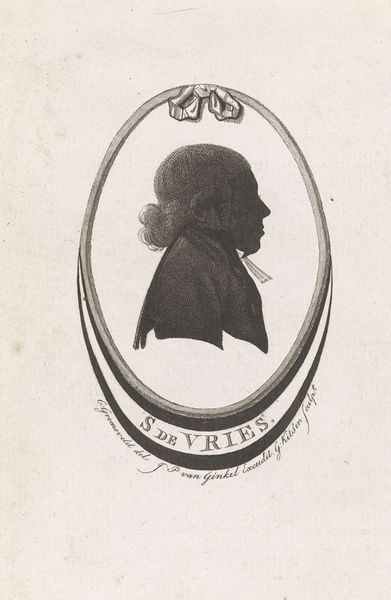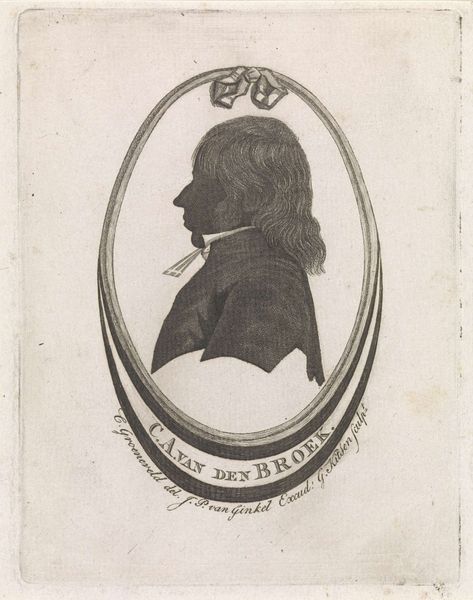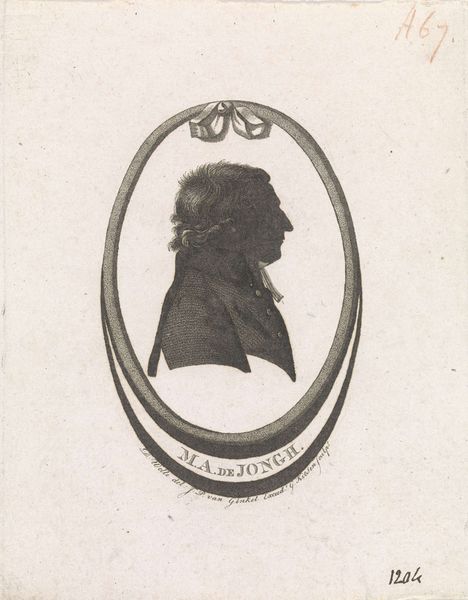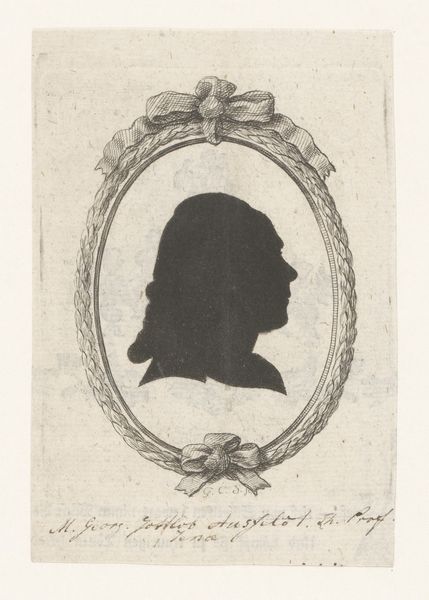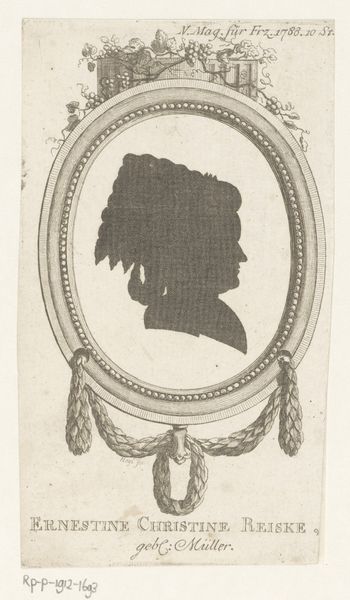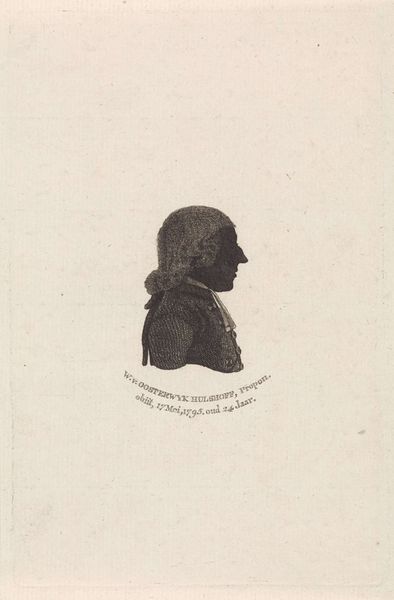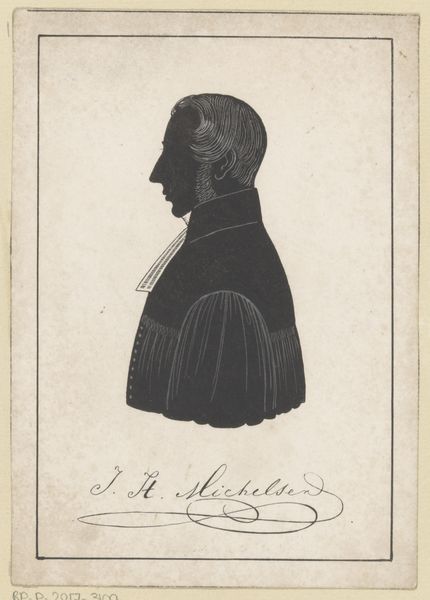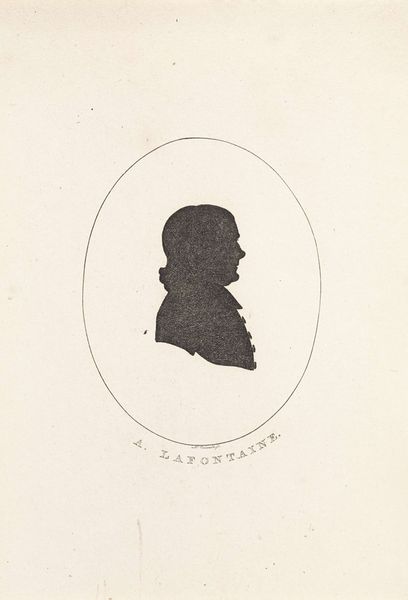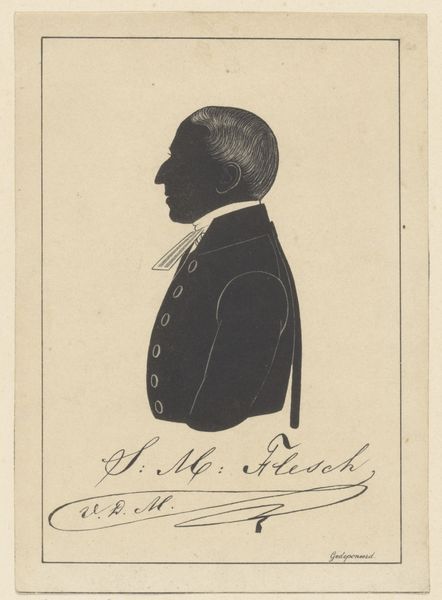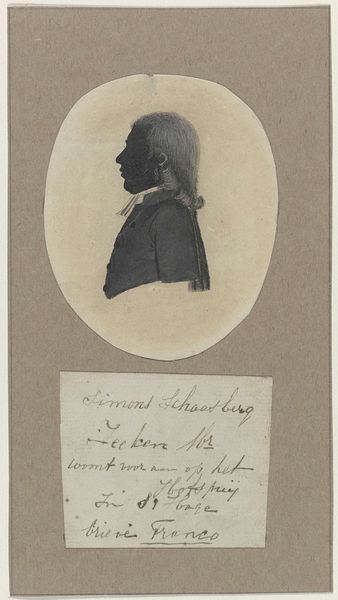
drawing, engraving
#
portrait
#
pencil drawn
#
drawing
#
light pencil work
#
shading to add clarity
#
neoclassicism
#
pencil sketch
#
old engraving style
#
figuration
#
form
#
personal sketchbook
#
line
#
sketchbook drawing
#
pencil work
#
shading experimentation
#
sketchbook art
#
engraving
Dimensions: height 131 mm, width 97 mm
Copyright: Rijks Museum: Open Domain
This silhouette portrait of J.P. SP van Eyk was made by Hendrik Roosing, and printed by I.P. van Ginkel. It is a very unassuming, yet intriguing work, made using the technique of etching, a printmaking process that relies on the corrosive properties of acid. The artist would have covered a metal plate with a waxy, acid-resistant substance, before scratching an image into the wax, exposing the metal beneath. The plate would then be dipped in acid, which bites into the exposed lines, creating grooves. These grooves hold ink, which is then transferred to paper under great pressure. Look closely and you can see the fineness of the lines achieved through this method. Etching made printmaking more accessible, and this rise in printmaking became deeply entwined with social and political movements. This seemingly simple portrait, therefore, speaks to a much wider world of labor, politics, and consumption. It’s a reminder that even the most modest of objects have their own stories to tell.
Comments
No comments
Be the first to comment and join the conversation on the ultimate creative platform.
